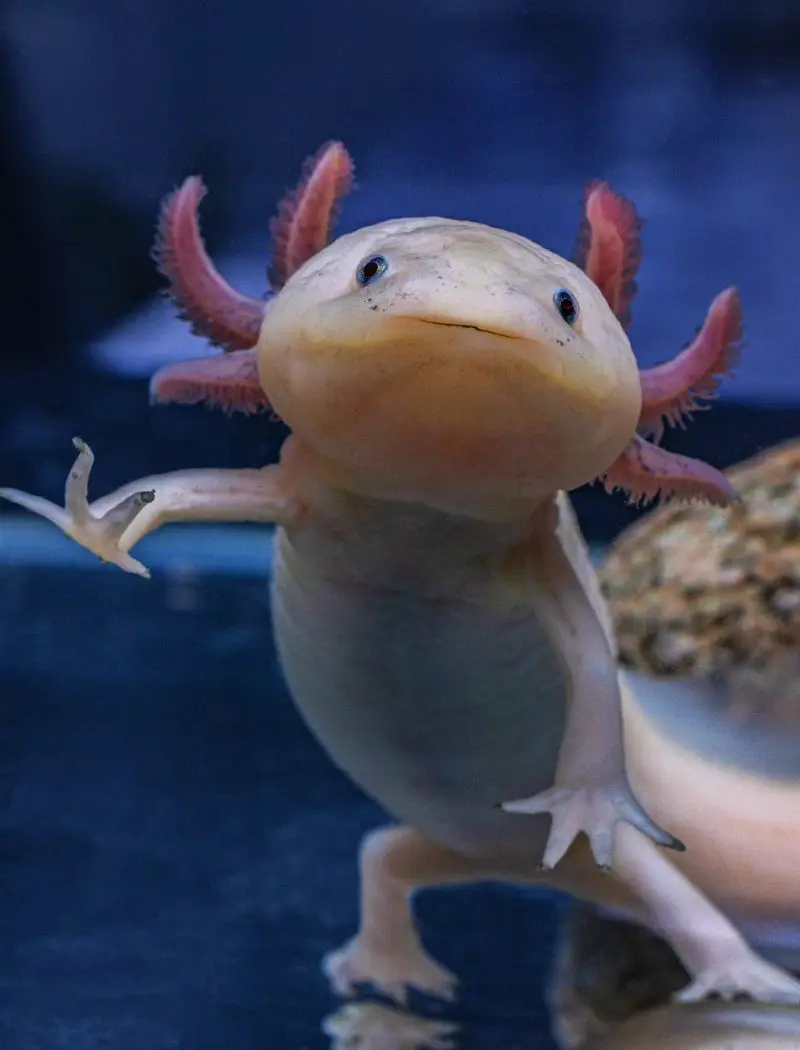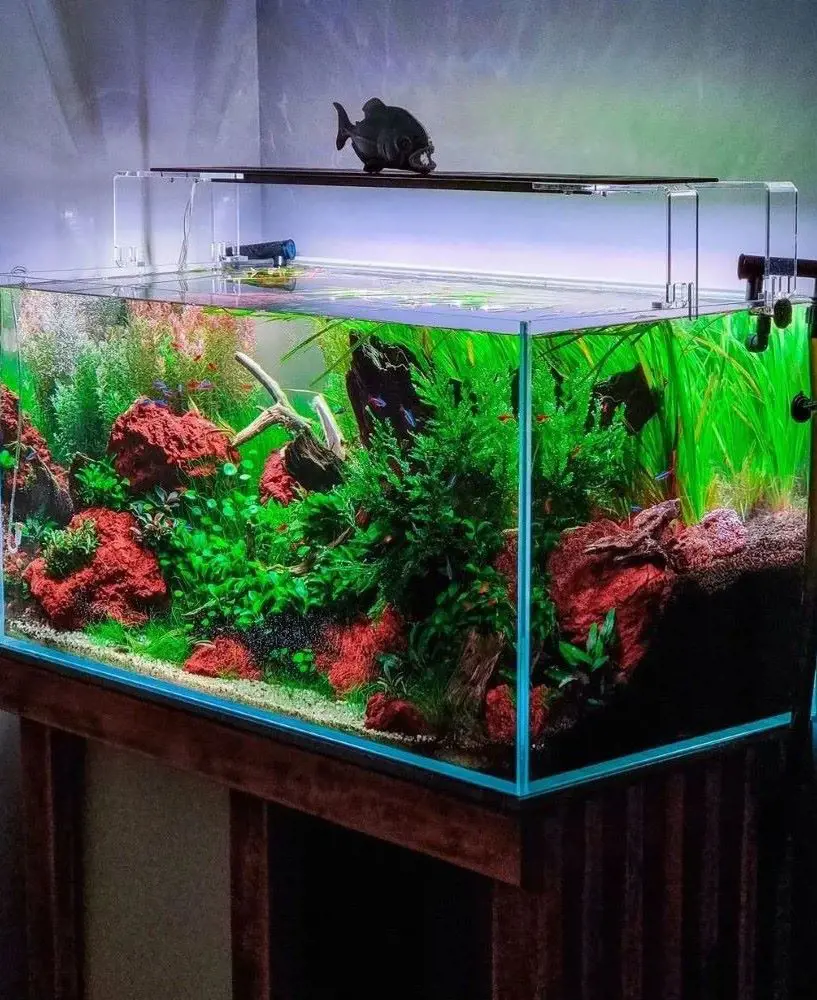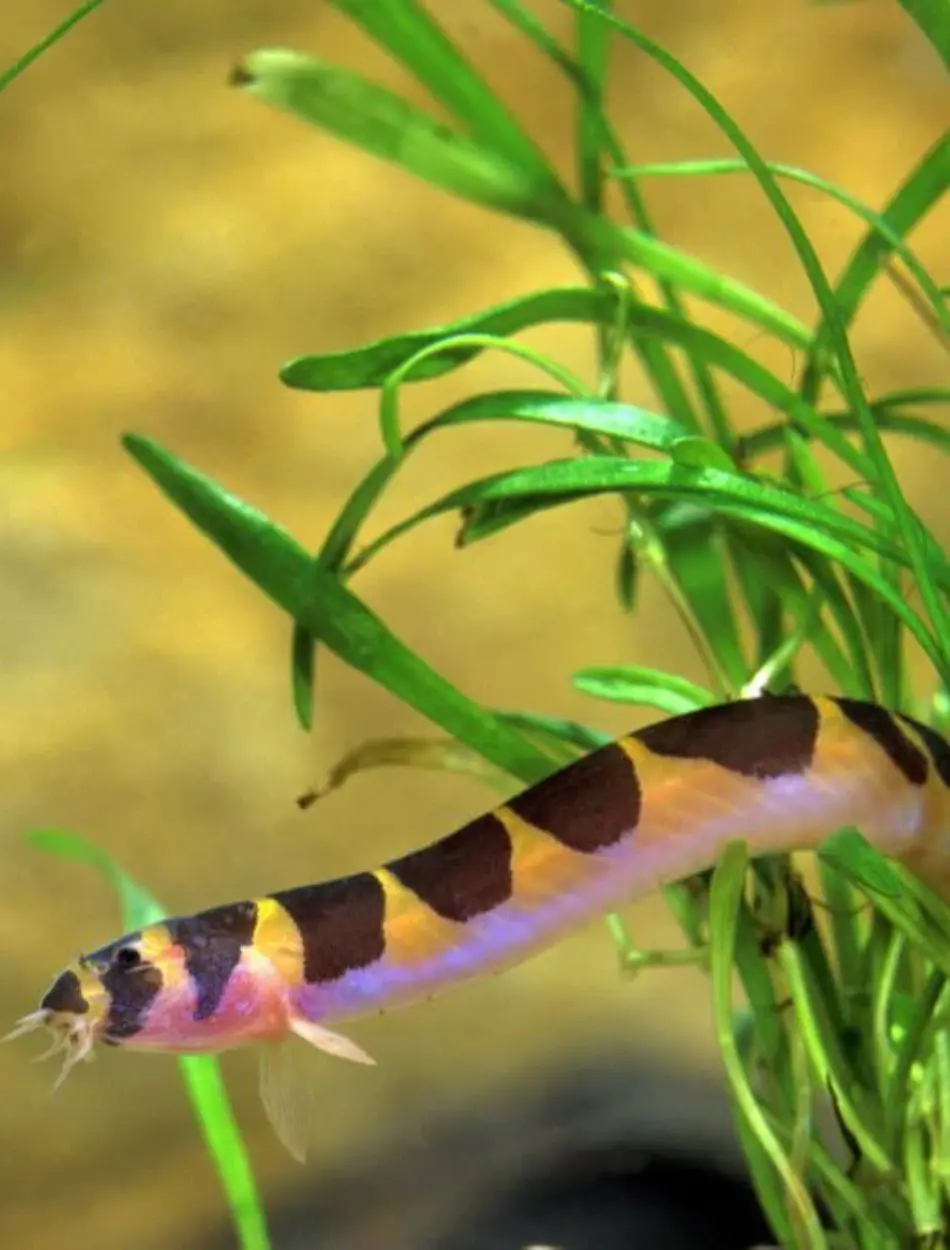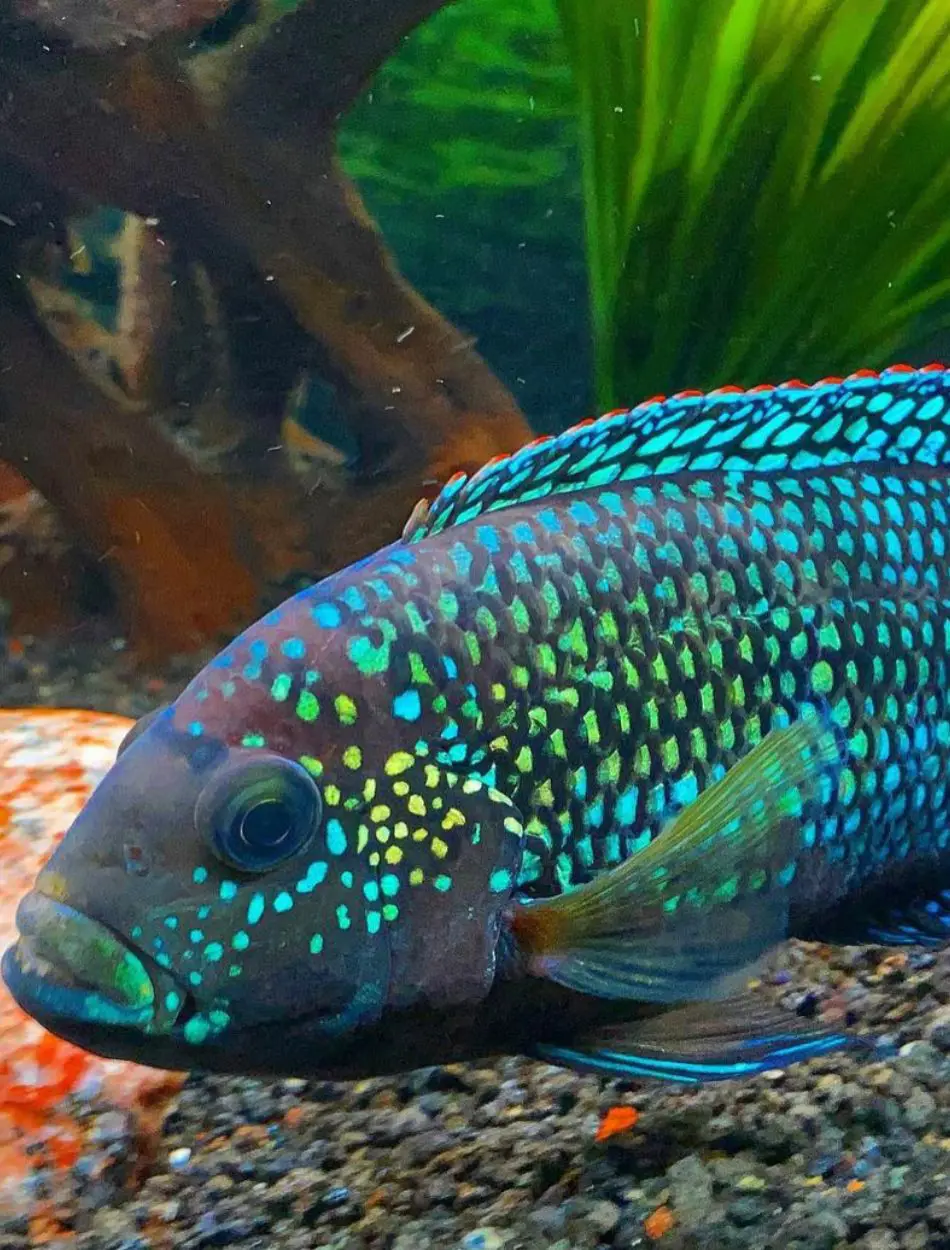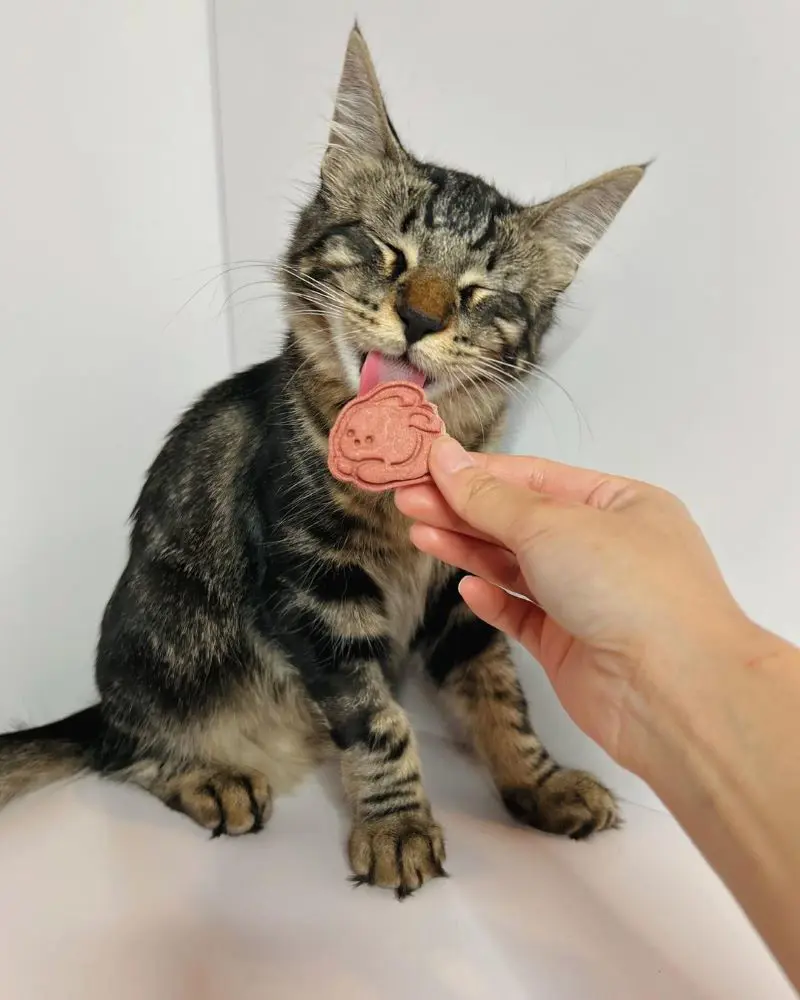Paradise Fish Care Guide And Tank Mates

Paradise fish are extremely popular among all groups of aquarists, given their beautiful color and active nature. Healthy freshwater from Southeast Asia is ideally matched with the pristine conditions replicated in aquariums.
All these things go into ensuring the health and long life of such a great creature, from proper water conditions to a well-balanced diet and the correct finned friends. To reduce aggression, this entails providing a healthy diet, keeping water parameters consistent, and matching them with compatible tank mates.
Ensuring A Balanced Diet
By feeding them varieties, paradise fish can be kept healthy and display brilliant colors. These omnivorous fish love to consume a variety of plants and animal products.
This should be in the form of quality flakes or pellets for tropical fish as staple foods, with extra frozen or live foods in the form of brine shrimp, bloodworms, and daphnia to provide them with much-needed proteins. You can also feed them blanched vegetables such as zucchini or spinach to get more vitamins into them.
If they have two light meals a day, it will prevent overfeeding and, in turn, avoid problems with water quality. A balanced diet will boost their immune system to promote healthy growth and keep them energetic, allowing them to shine with their vibrant colors naturally.
Ideal Paradise Fish Tank Setup
Setting up a proper tank is important for the health of the paradise fish and to create a scene that gives the impression of being in their natural habitat. A dark ground with sand or gravel creates a huge contrast to the vivid colors. Many living plants, like floating plants, anubias, and Java ferns, will help improve the quality of the water and hide stains.
Tank Size and Water Parameters
A good tank setup is very important to the paradisefish environment and must produce a perception of being in their natural habitat. Dark ground, sand, or gravel forms a huge contrast to the vivid colors. Living plants, such as floating plants, anubias, and Java ferns, will ensure quality water and mask stains. Maintaining a high water quality will ensure the health and lifespan of your fish. This requires routine water changes and careful monitoring of the levels of ammonia, nitrite, and nitrate.
Lighting and Substrate
The paradise fish will have more color with moderately bright lighting, and live plants like it when the lighting is good. Very good are the LED lights, as they don't raise the temperature of the water too much, yet still give enough light. It is good for the base to have dark brown sand or gravel. Reason number two for having the substrate darker is that it is very excellent for helping to be able to create an environment that would be far more similar to their natural habitat, the river waterbed, and, therefore, reduce stress levels within the fish.
Plants and Decorations
It provides plenty of hiding places, reduces stress levels, and water quality in a paradise fish tank with live plants. This encompasses aquatic plants such as Anubias and Java fern and floating types like Water Sprite. Such hardy plants, as mentioned, create a very natural environment in low to moderate light. The presence of these elements gives the fish expression of natural behaviors, enhancing beautification and making the fish feel safe or comfortable about their surroundings.
Behavior Of Paradise Fish
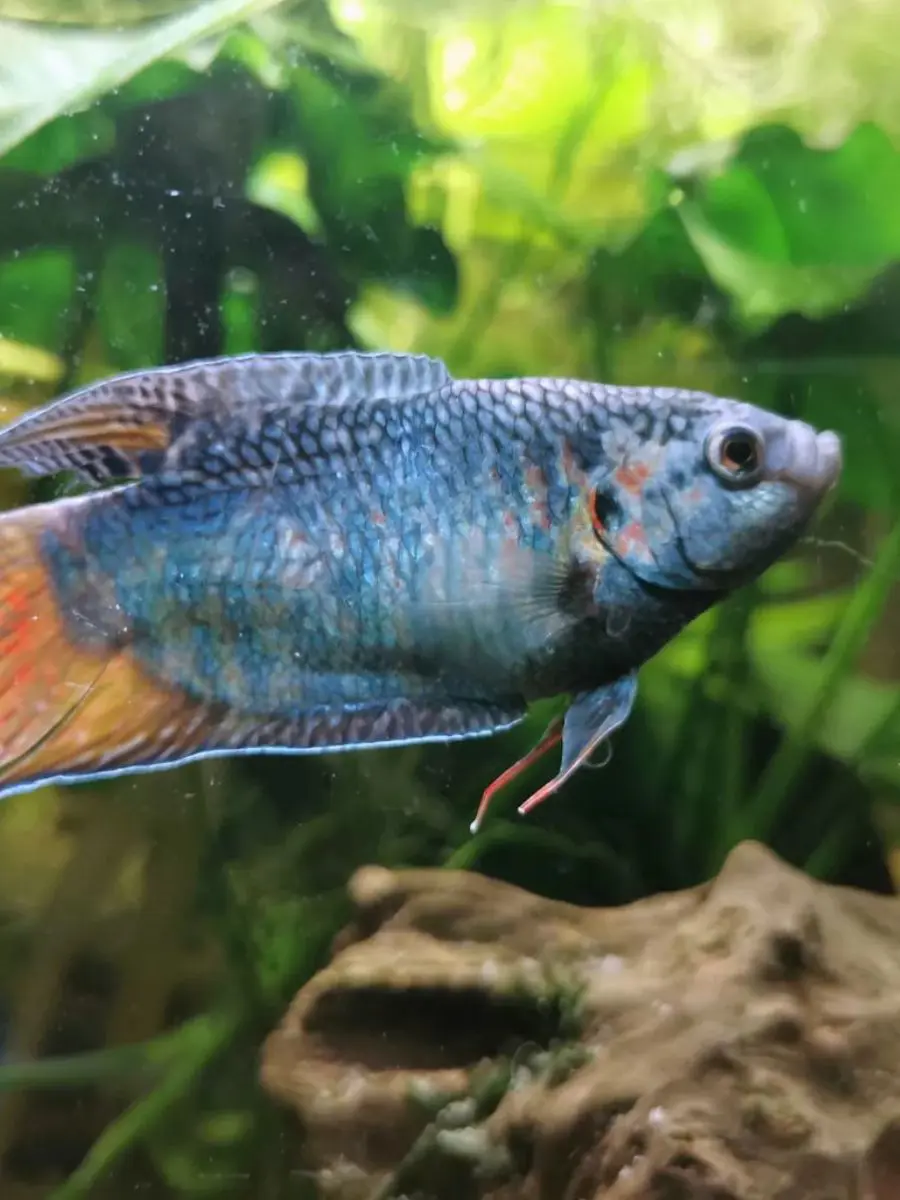
The paradise fish is social, especially the males, who are often very lively. They can also get very aggressive at times, especially when trying to mark out their territory within the tank or during their courtship periods.
A male may flap his fins and show bright colors toward rival fish, which can sometimes turn into violent disputes. Paradise fish are rather intelligent and curious, swimming around and showing interest in their environment. They do this even though they can sometimes be very aggressive. They are basically happy to swim in different levels of the aquarium constantly and, most of the time, are interested in their tank keepers.
Although they can coexist with other species, the choice of calm-natured companions and similar size is of paramount importance so as to avoid fights and maintain a quiet aquarium environment.
Breeding Paradise fish
One of the real pleasures of breeding paradise fish is planning beforehand and minutely observing details. These are bubble nest builders, with the male doing most of the work in courtship. Set up a separate breeding tank, well provided with hiding places, and use water a little cooler than normal, about 80EF. The male will build his bubble nest along the edge of the water, often near floating vegetation.
Setting Up the Breeding Tank
The first process of a successful production of paradise fish entails setting up a separate breeding tank. These tanks should contain ten to fifteen gallons of water, with the ideal temperature being 80°F to encourage spawning. Most of all, put many hiding places, like caves or spots with heavy vegetation, in order to keep the female safe. The male can build a bubble nest with the help of floating plants or a half-cut Styrofoam cup, as these items provide a sturdy surface.
The Breeding Process
Introduce the male first and allow him to establish the tank as his territory and build the bubble nest. When the nest has been readied, introduce the female. He will court her by flashing bright colors on his person and flaring. After the female lays her eggs off her body, the male will collect them gingerly and nest them.
Post-Spawning Care
To avoid the male harming the female, remove her as soon as the eggs are tightly secured in the nest. The male will then guard them for a further 24 to 36 hours that's how long it takes before hatching. It will be better to consider removing the male after the fry is free-swimming, a phase that typically occurs in a few days. Otherwise, he'll start to view them as a tasty snack.
Caring for the Fry
Cloud the water with infusoria or liquid fry chow in the first few days after hatching. As they grow bigger, wean them off this diet by feeding young brine shrimp or flake foods that have been powdered. Keep performing regular water changes in your tank and maintain a stable temperature so they will grow out well.
Common Health Issues
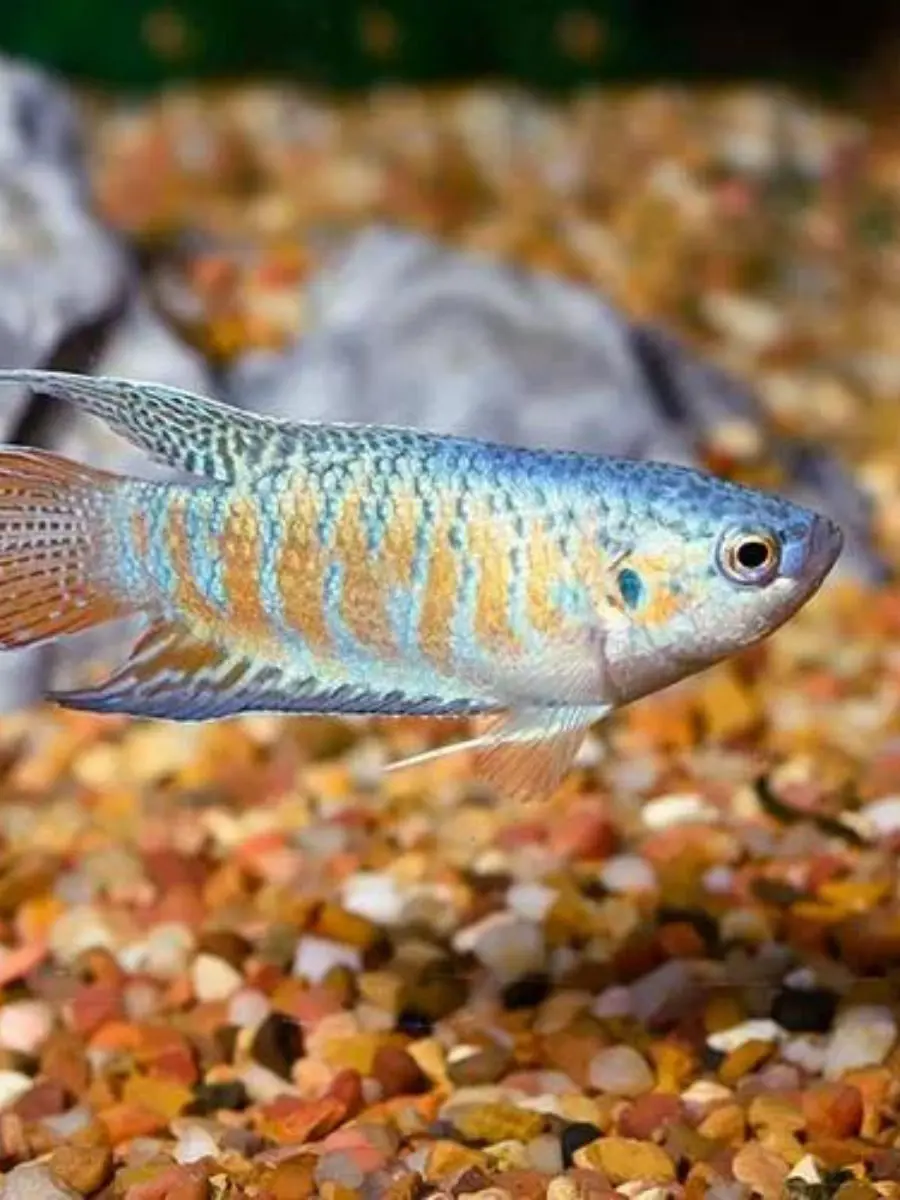
Even though paradise fish are hardy, they will still have some common health problems if their habitat is not maintained. Probably the most common problem is Ich, a parasite infection that causes white patches to appear on a fish's body and fins. Treatment includes over-the-counter drugs and slowly raising the tank's temperature.
Fin rot is another problem related to very poor water quality, which could be due to bacterial infections. Bacterial infection of the fins causes fraying or loss of fin tissues, which manifests as fin rot. Basically, one can prevent and treat this by making the water clean and by treating the tank with antibacterial agents.
Further, paradise fish are prone to various forms of bacterial infections, such as dropsy and fungal infections. These may take many forms, usually swelling, odd coloring, or just acting strangely. This must be treated promptly with the appropriate antibiotics or antifungal medications.
If this does strike, swim bladder disease will prevent them from swimming properly and staying balanced. This is often caused by diet and may be prevented by a well-balanced and varied diet. General advice regarding preventing well-being problems in Paradise fish includes a varied diet, general tank cleanliness, and monitoring of water parameters to ensure the well-being of fish.
Paradise Fish Tankmates
Since Paradise fish are known to be semi-aggressive, especially with males who might be territorial, then one needs to be careful about choosing tankmates. What is important here is selecting species that will live harmoniously together without bringing out hostility.
Good Tankmates
Other good companion fish would be peaceful ones of about the same size, like Swordtails and Platies. Even larger Tetras, such as Black Skirt or Serpae Tetras, are a nice mix. They are able to take care of themselves, yet not too much troubled by the Paradise fish since they aren't aggressive themselves. They may also involve some loaches, such as the Kuhli loach, and bottom-dwelling fish like Corydoras catfish that don't create competition directly by being fond of the different levels in the tank.
Tankmates to Avoid
Keep your paradise fish away from slower or long-finned fish, like betta fish, guppies, or angelfish, since they are teased or even nipped. Never put them with small or timid fish either; the more assertive Paradise fish may cause them stress or even hurt them. In fact, one can create a peaceful and varied community tank by careful selection of appropriate tank mates and leaving many hiding spaces and space, and that will markedly decrease conflict and effectively maintain the health and stress levels of all involved.
Seasonal Changes and Their Influence
Like most other tropical species, paradise fish have evolved to respond to environmental seasonality, mostly water temperature, light cycles, and food-feeding patterns. This variation in fish's natural habitat acts as a stimulus for different levels of activity in courtship or foraging behavior.
Temperature Fluctuations
The temperature is high during warmer months, and thus, their metabolic rates are higher, and they become very active. Particularly, the male paradise fish become more aggressive and active, and mating is more likely to occur. Conversely, their metabolism might slack in the low temperatures during winter, and thus, activity and appetite would be lower. The temperature of the tank should, therefore, be maintained so as not to stress them.
Light Cycle
This will mean that, to some extent, the patterns of the daylight hours will affect the behavior of your Paradise fish. Inasmuch as fish associate longer periods of light in a day with the onset of the natural breeding season, it is expected that longer days with more light could provoke orbital behaviors. On the other hand, they will be less active on short days and develop a great urge to rest. You can simulate this on your fish by simply changing the light cycle in the tank to keep them in sync with nature.
Feeding Patterns
The amount and even frequency of feeding a Paradise fish can also alter with the change in seasons. Their metabolism and appetite certainly run higher when given regular food during hot months. On the contrary, they will eat less because of natural causes during cold months. Therefore, if feeding times adjust to the changing seasons, then these Paradise fish will definitely be kept in good health and will not be overfed or underfed.
Ensuring Long-Term Health
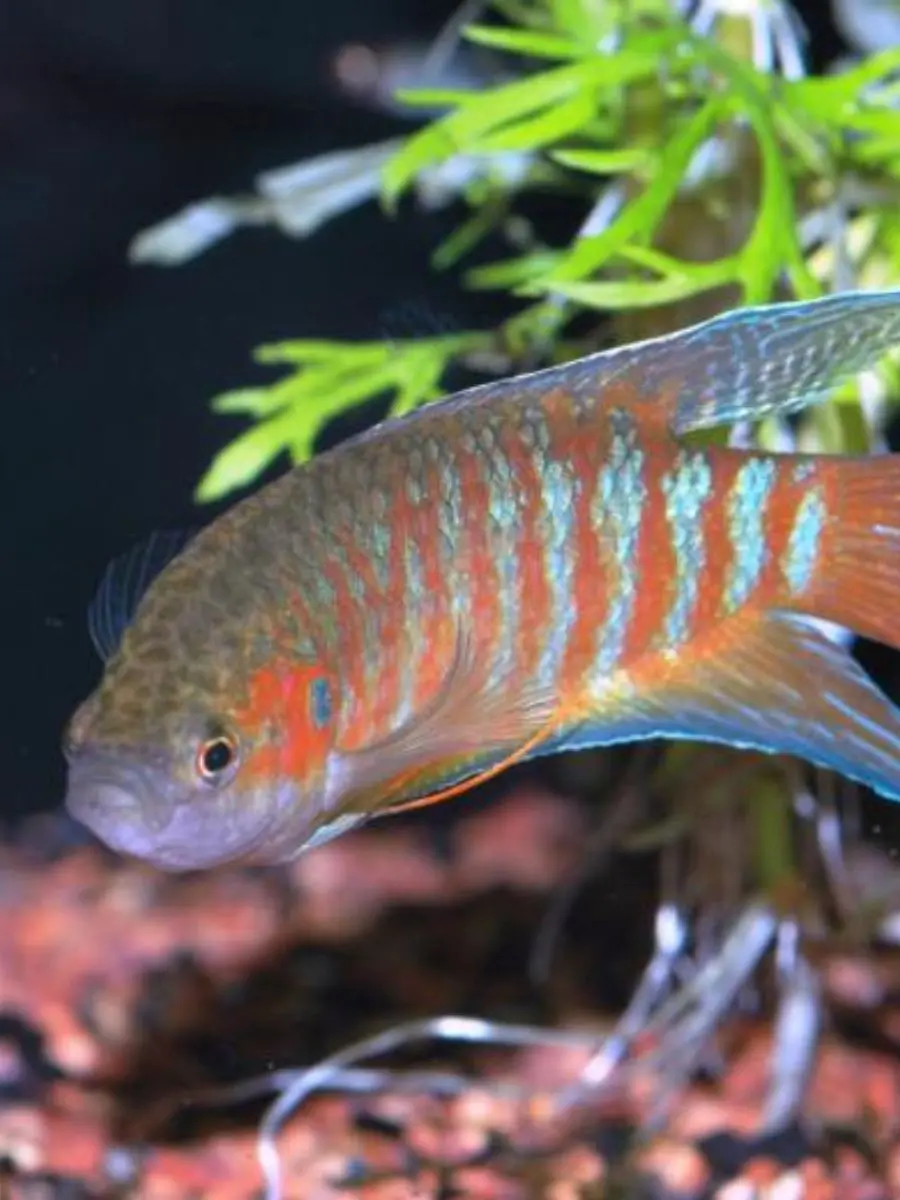
Long-term health benefits will be derived when the water of a paradise fish is of quality, it is on a proper and well-rounded diet, and early warning disease signs are monitored.
The general rule in changing water is around 25–30% on a weekly basis to prevent buildup of toxins. Testing of water should be regular to ascertain the PH, hardness, and temperature of the water. They will be kept rounded off with a diet that provides complete nutrition, together with a wide range of supplement foodstuffs other than quality flake, pellets, and frozen or live food. Monitoring such afflictions will be noted at the first sign and dealt with in a timely fashion while watching constantly for any changes in behavior, color loss, and appetite.
Quarantining Fresh Fish before putting them into the main tank also helps reduce the chances of a disease outbreak. By observing the guidelines and keeping your tank clean, you will keep paradise fish healthy and vigorous.
Recent posts
Fish
Axolotl (Mexican Walking Fish): Species Profile
Axolotl is a walking fish that is known to captivate fish enthusiasts and scientists. They remain aquatic their whole life and stay in the larval stage. They are also known for their regrowing ability and solitary nature. This article discusses the h...
20 Coolest Freshwater Fish To Add Pop And Color To Your Aquarium
With so many options of freshwater fish available, selecting the right species can be a daunting task. Due to careful breeding, there are thousands of species ready at your disposal to turn your room into a fish lover's paradise. From the vibrant col...
20 Best Betta Fish Tank Mates
Selecting suitable Betta fish tank mates is a delicate work that calls for a considerate balance between companionship and compatibility. Although renowned for their colorful colors and flowing fins, Betta fish are equally notorious for their territo...
Why Is My Fish Tank Cloudy?
Cloudy fish tanks can be frustrating for any aquarium owner. Especially if one has put in the necessary effort to accomplish a beautiful underwater setting. Whether you are an inexperienced aquarium holder or one of the pros, cloudy water may be the ...
20 Long Freshwater Fish For Aquarium
Having a range of long, gorgeous fish in your freshwater aquarium can make it an immensely fulfilling experience. Choosing the right fish is the first step to an exciting freshwater aquarium, and long freshwater fish are among the best options. ...
17 Cichlid Tank Mates For Your Aquarium
Cichlids are one of the diverse and captivating freshwater fish that are known for their vibrant colors. They are found in tropical America, mainland Africa, Madagascar, and southern Asia. These freshwater fish have elongated streamlined bodies...
